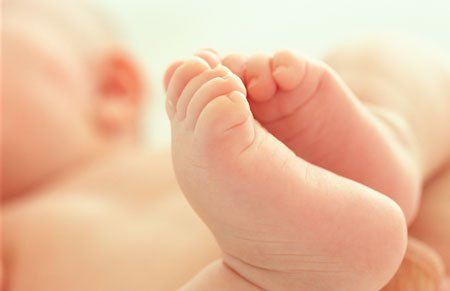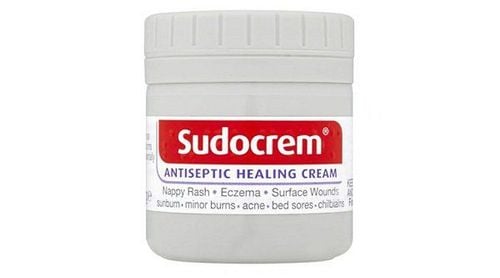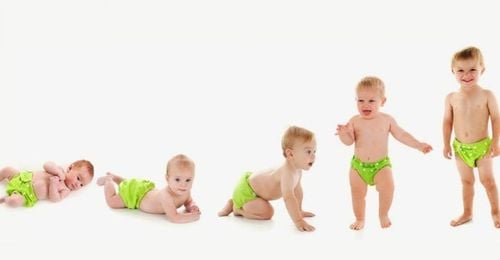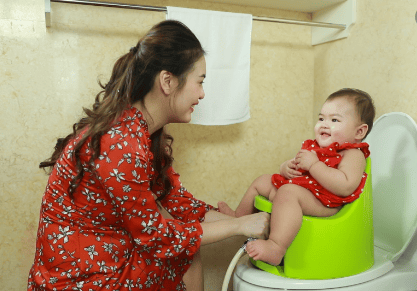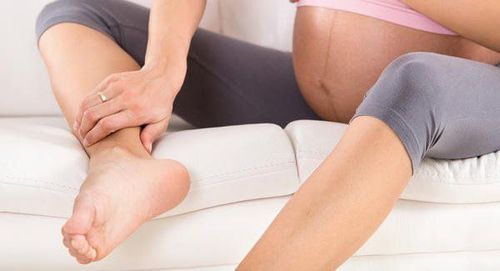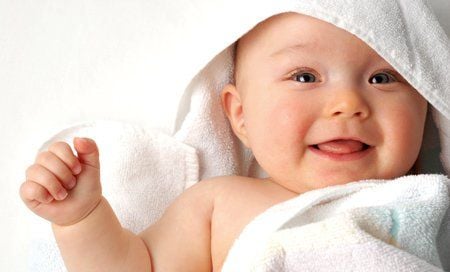This is an automatically translated article.
The article was consulted with Specialist Doctor I, Resident Doctor Nguyen Hung Tien - Doctor of Pediatrics - Neonatology - Department of Pediatrics - Neonatology - Vinmec Hai Phong International General Hospital.Cloth diapers for children are items that have appeared for a long time and are very familiar. Over time, today's cloth diapers have gradually improved, making them easier to use and wash. Here's a modern cloth diaper guide for families about to welcome a new baby.
1. Guide to choosing cloth diapers
1.1. Diaper cover and inner lining
Diaper covers come in a variety of shapes, sizes, and colors. The styles of diapering are also very diverse, including buttons, adhesive tape, or simply pulled up like wearing pants. Diaper covers are usually made of wool, felt or PUL (polyurethane laminate) waterproof fabric.Inside the diaper cover can be flat lining, free folding or contour folding available. Specifically:
A free-folding diaper is a rectangular piece of cloth with a thick, padded middle. This type needs to be folded before lining the baby. A flat diaper is a large square cloth of uniform thickness. Contour diapers when opened are shaped like an hourglass, closed with built-in squeeze, elastic or pins. Pants diapers are similar in design to disposable diapers, but require a cover or pants over them. This diaper is also shaped like an hourglass, has elastic bands around the legs and waist, and is secured with buttons or built-in straps. Most cloth diapers have separate covers that need to be secured with a diaper pin or lanyard. These aids help keep your baby safe and comfortable, and keep the diaper cover from getting dirty.
1.2. Diapers "All in One"
This diaper consists of a waterproof outer layer, a super absorbent sweatpants and an inner lining. Diapers are fastened with snaps, straps, or elastic bands around the legs and waist, similar to disposable diapers."All in One" diapers come in two forms:
All sections sewn together into a complete, non-separable diaper Layers are partially separated, tied together with buttons, for washing and drying will dry faster. This diaper will be used once, when dirty, wash, dry and then reuse.
1.3. Diapers "All in Two"
Includes a waterproof outer shell and a pad that is placed between the diaper and baby's skin. Some will attach the liner to the diaper outside with a button or tape, while others snap the liner into a pre-sewn position on the diaper cover.Diaper covers with elastic around the legs and waist, with buttons or straps fixed. The linings are made of absorbent materials, sometimes even covered with a dry cloth for comfort. There are also some cloth diapers of this type that use disposable cotton newborn pads.
When your baby needs a diaper change, you can change the pad and keep the cover. Only when the cover is also dirty do you need to replace both.
1.4. Diapers with pockets
A diaper with pockets consists of a waterproof outer layer and an inner fabric with open pockets. Mom will put the pad in the bag before wearing and then take it out to wash. The absorbency of bag diapers can be adjusted by using more or less newborn pads.The inner fabric is usually made of dry material to keep your baby comfortable. Pocket diapers have elastic around the legs and waist, and are closed with snaps or straps.
Because both the pad and the diaper get dirty when your baby urinates or poops, bag diapers are used once, then washed. When removing your baby's dirty diaper, you should remove the pad before putting it in the bin. This way, on the day you wash your diapers, you won't have to spend time removing each one.
1.5. Cross diapers
Among the popular cloth diaper options today, cross diapers are baby-friendly, convenient and economical. Cross diapers, also known as triangle diapers, are used with newborn pads, suitable for newborn babies still wrapped in towels, just lying still without much need for activity, little waste and sporadic.Choose cloth to sew twill diapers should ensure high-quality cotton, soft, stretchy and absorbent, quick to dry when washed. Choosing cloth diapers made from natural materials will be safe for children's sensitive and delicate skin, avoiding diaper rash, dermatitis or diaper rash.
See more: Diaper rash in children: Causes, treatment instructions
Cross diapers are very economical, can be used many times but the price is cheaper than other types. Another advantage of cross diapers is that they are easy and quick to change, giving mothers more time to rest or do other things. Cross diapers are mainly popular in the summer, mothers need to pay attention to keep their children warm in winter. If the baby steps on the foot, the cross diaper may slip, this is also an inconvenience when choosing a triangle cloth diaper for your child.
Recommended video:
How to wrap a baby's nest
2. Additional items when using cloth diapers
2.1. Lining
Whatever cloth diaper you choose, it's still a good idea to stock up on some lining fabric to increase waste absorption and absorb moisture, keeping your baby comfortable. The lining is usually made of paper, felt or other fabrics.Another function of the liner is to prevent the baby's skin cream from getting on the diaper. Linings contaminated with cream should be washed separately from diapers to avoid reducing absorbency. If you choose a liner that dissolves in the toilet, you will make it easier to dispose of the stool by simply throwing the liner down the toilet and pressing the flush button quickly.
2.2. Moisture-wicking pads
Moisture-wicking pads help diapers increase fluid absorption, and are sometimes covered with a dry cloth to keep your baby comfortable. The diapers listed above often include absorbent pads. If not, the mother should supplement the baby to improve the absorbency of the diaper. The desiccant pad will be made of an absorbent material, such as fish scale (cotton terry), bamboo fiber, hemp or cotton.2.3. Disposable wipes or tissues
Disposable wipes and tissues are widely available in the market, and are available in a full range of toilet-dissolving and biodegradable versions. Alternatively, baby wipes can also be used. Usage is very simple, you just need to wet a cloth with warm water or a homemade mixture - consisting of water, a little liquid soap, and sometimes 1-2 drops of essential oils.2.4. Dirty diaper container
Diaper bins come in many sizes and shapes. If you want, you can even use a regular trash can.Diaper bins are designed with a special liner or a disposable plastic garbage bag that repels waste, others can be washed with the diaper. Make sure to use bins with lids, especially if you have children or pets in the house.
The lid of the diaper box has a touch type, the lid rotates, opens and closes by foot pedal or using remote. The dome lid allows air to circulate in the barrel and reduces odors somewhat. Some modern diaper boxes even include an air filter to reduce odors.
Note, if you have a habit of putting dirty diapers in a container full of water, you do not need to use a liner under the bin. Choose a small, sturdy container with a handle and spout. The crate should be placed in a safe place, out of the reach of children and pets.
2.5. Waterproof bag
These waterproof bags are an alternative to diaper bins, hung on doorknobs or hooks, used to store dirty cloth diapers, diaper covers, wipes or clothes. Waterproof bags come in many shapes and sizes, large for indoors and small for outdoor use.2.6. Hose
The sprinkler, which is used to wash away stool in diapers, is fitted to the toilet's water supply line and hangs on the side of the toilet bowl. While not strictly necessary, the spray nozzle makes washing diapers easier. Otherwise, you have to splash the dirty diaper in the clean toilet and make more contact with the toilet. When it's time to flush the diaper, just take out the hose and spray. In addition, the spray nozzle can also be used to wash the child's potty.With the advent and development of super convenient disposable diapers, many families also wonder about whether to use cloth diapers for babies. In fact, using cloth diapers is an economical, environmentally friendly option that helps prevent diaper rash.
In case the baby has diaper rash and the mother has applied care when the child has a diaper rash but the condition does not improve, then the mother needs to take the baby to see a pediatrician for advice and instructions on proper baby care. ways and prescribe diaper rash cream suitable for children's skin.
Pediatrics Department at Vinmec is one of the few multi-specialty hospitals with a full range of doctors specializing in neurology, cardiology, gastroenterology, nutrition, psychology, endocrinology, hepatology, helping to handle it quickly and in a timely manner. when diseases are discovered during the examination. As a key area of Vinmec Health System, Pediatrics always brings satisfaction to customers and is highly appreciated by industry experts.
Please dial HOTLINE for more information or register for an appointment HERE. Download MyVinmec app to make appointments faster and to manage your bookings easily.
Reference source: babycenter.com




